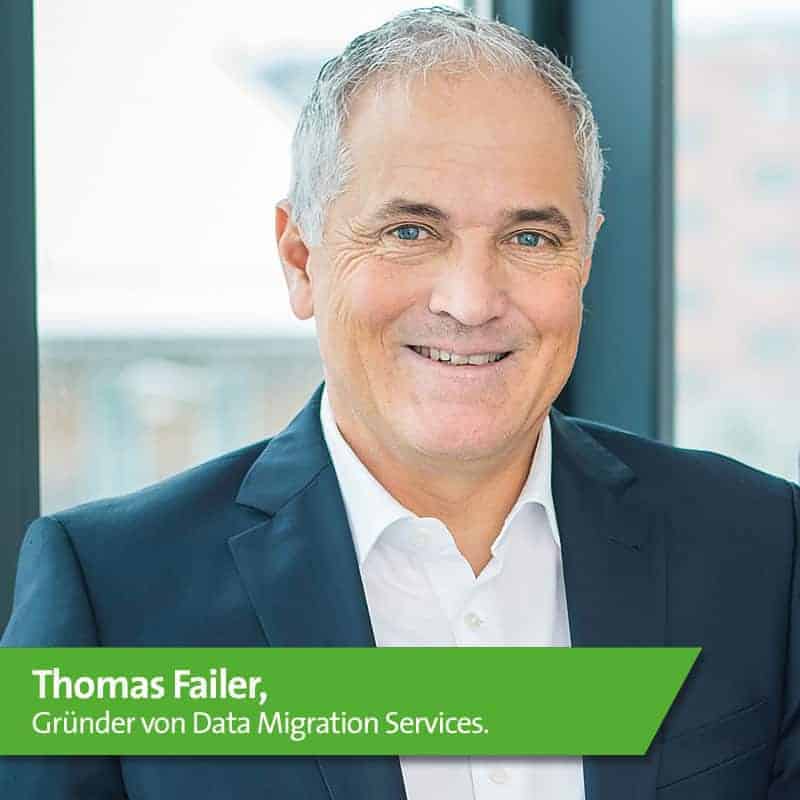The problem of (incorrect) legacy data
![[shutterstock.com: 1135176134, SkillUp]](https://e3mag.com/wp-content/uploads/2020/09/shutterstock_1135176134.jpg)

Data is the fuel of the digital economy. Whether we measure and monitor our fitness using mobile apps and the cloud, whether we use algorithms to optimize our energy consumption at home, or whether we will soon let the computer in our car do the driving - everything depends on data and its quality! This is just as true for the modern business models of digital newcomers as it is for established companies in traditional industries and sectors.
Desire and reality
However, the reality for many existing SAP customers is quite different: One customer (or supplier, product, material, etc.), many data records. A typical situation that has almost inevitably developed. A customer calls, reports a fault and his data is recorded in a system. Another time he files a complaint and it is recorded a second time. Unfortunately, however, the service employee responsible writes down the customer's name incorrectly.
During the third contact with the company, the customer orders a product, but has moved in the meantime. Since the customer cannot be found at the new address, the sales department creates a new data record. And there are not only three data records for one and the same person, but three different customers. This makes it very difficult, if not impossible, for companies to establish the correct relationships between the data records, not only in evaluations, but also in day-to-day business.
If we take into account the various archives and legacy systems that are not or only very rarely used in everyday life, it becomes clear that the phenomenon permeates the entire stored corporate history. This, however, is the greatest asset that established companies in traditional industries can use in the race to the digital future.

After all, historical information contains a treasure trove of immense value for future value creation: the intellectual property and history of entire generations of customer relationships - something that the newcomers and challengers cannot yet have to this extent. But this treasure is difficult to unearth if it is buried under data garbage, so to speak.
Digitization and Big Data through to IoT - more than ever, it is not only a matter of correct data stocks, but also of harmonizing them. Today, master data on customers, suppliers, products, etc. is usually available in a variety of different structures that correspond to the number of applications and systems in which they are maintained.
Even if the master data in one of these systems is cleanly maintained, contains no errors, and is complete, companies still do not get an all-round view of their business objects from it, but only a partial one, limited by the specific perspective of the respective application. Only a harmonized data structure, maintained and optimized above the level of the individual systems, allows the necessary 360-degree view.
Consolidation alone is not enough
However, mastering these challenges is anything but easy. After all, the IT landscapes of existing SAP customers have grown and bear witness to the company's history. The resulting complexity threatens to become so great that it cannot be managed in the long term, either technically or in terms of personnel and finances. For this reason, companies have been investing in projects to consolidate and harmonize the IT landscape for years. The end result is the vision of a single central system worldwide, especially in the ERP area.
However, the data and documents contained in the legacy systems must be retained unchanged during the legally prescribed retention periods. For this reason, most companies continue to operate their legacy systems even as part of consolidation projects. As a result, complexity remains high and ties up too many human and financial resources.
However, these are lacking for real innovation projects. After all, a central ERP system for all employees and departments worldwide is supposed to reflect the state of the art of corporate processes and structures and form the basis from which the future is shaped. However, the poorer the quality of the information transferred from the legacy systems and the less harmonized it is, the more fragile this proves to be. Poor data quality and complexity are thus mutually dependent and reinforcing.
What SAP legacy customers therefore need are technologies that not only help them optimize the quality of the data, but also harmonize its structure. The end result should be a kind of virtual, because system-independent, master data management that maps all the different table structures and attributes from the individual systems to the golden standard of the virtual level, so that a common register for business objects (common business object record) is created.

Clear the stage for harmonized data
These technologies are based on a completely new approach: For master data harmonization, all systems in question should be searched, the data extracted and stored on a neutral platform. There, they can be analyzed for duplicates, consistency and correctness. Automated procedures check for duplicates, postal code errors, bank data, etc., and make automated corrections based on rules.
Such a platform acts as a central collection point and staging area for enterprise information as part of projects to optimize data quality. It can be used not only to optimize data quality, but also to determine the reduction potential of data before it is transferred to new central environments.
At the same time, SAP legacy customers can use it to define the filter rules for data transfer and make them available in a neutral format for subsequent transformation and migration of the information for transfer to operational systems as part of consolidation projects or to analytics solutions as part of digitization initiatives.
The greatest advantage of a data staging area, however, is to create a harmonized master data structure, even for legacy data, that corresponds to the one that exists in the leading operational systems. This process, called "Technical Structure Mapping," means that, for example, the master data for a customer or supplier that was originally created in SAP ECC 6.0 or any third-party system is queried and displayed as if it had been generated in SAP S/4 Hana according to the structure of the Partner business object, which, as we know, no longer distinguishes between customer or supplier.
If this mapping reveals that individual data records are missing to obtain a true 360-degree view, they can be enriched from third-party systems such as sales and service solutions.
These views of business objects can also be designed selectively and linked to transaction data. Appropriate filter rules can ensure that users are only shown those customers for whom orders have been received in the past five years.
However, since all legacy information has been transferred to the platform, the filter rules can be changed at any time and thus also display, for example, those customers who last purchased something ten years ago. As a result, SAP legacy customers can thus gain a complete view of business objects in the current data structure of the leading system at any time.
Digital future
Against this background, the upcoming transformation to the new software generation from Walldorf is the great opportunity for data harmonization, which can be achieved most easily, cost-effectively and effectively if it takes place before the switch to S/4 Hana. Only if data harmonization takes place independently of the individual systems can it play its role as a catalyst for digitization.
With this approach and a corresponding solution, as embodied by the system-independent and auditor-certified platform for information management JiVS IMP, the path to the digital future is also clear for established companies and SAP legacy customers with historically grown and heterogeneous application and system landscapes.





